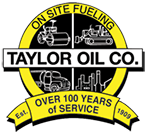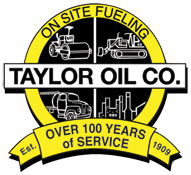Tips for Disaster Preparation – Natural disasters disrupt our quiet complacency every once in a while, showing us Mother Nature’s unchained fury. Just take Hurricanes Harvey, Irma and Maria this last fall for example, with Harvey alone causing the deaths of nearly 100 people and $200 billion in damage. Here in the Northeast, nor’easters, blizzards and ice storms will soon be ripping through the region, causing their own damage and disruptions.
To ensure smooth operations during a natural disaster, follow these preparedness tips:
Have a plan. When disaster hits, everything is thrown into chaos. The last thing you have time for is to come up with a contingency plan to get fuel for your fleet. Getting the ball rolling quickly means you have a plan, push one button or make one call, and it’s taken care of. Getting that plan in writing so you can refer to it easily is imperative. Taylor Oil works with our clients to create emergency fueling profiles that can be put into action should the need arise.
Be prepared to make quick decisions: Indecision will cause even more delays, and you don’t have time for that when an ice storm is barreling down upon your area.
Work with your fueling provider well in advance. You can’t just request 10,000 gallons of fuel the day a hurricane hits or a blizzard descends on the area. Your fueling provider is facing its own logistics and supply nightmare, so advance prep helps a lot in these situations.
Go through test runs before disaster actually hits. Just like with anything else, test runs can uncover pitfalls and problems that you can work out before an emergency happens so that the plan goes smoothly in the event of a real disaster.
Know your area and your needs. Sometimes, natural disasters force your fueling providers to have to re-route trucks, re-consider priorities and move product around differently to accommodate the emergency situation.
Stay apprised of the weather. While the weather may look calm and serene now, you know something wicked this way comes. Check frequently on the storm’s progress and get automatic updates on how the projected storm will impact your area.
Check your inventory levels. Restock essential assets that you are running low on before the weather turns.
Check your current fuel levels. Fill or top off your tanks or vehicles in advance. Keep a running log of current fuel levels on all equipment. Calculate how much you’ll need to make it through the storm and make sure you have enough.
Check your back-up generators. Make sure they’re operating properly and that they have enough fuel as well.
Use technology to communicate with your fueling provider. If your provider is expecting to meet your fleet for fueling in one location, but because of storm surge, for example, you had to relocate, you need to be able to instantly communicate with the fueling provider of the change. Many fueling providers have apps, websites and 24/7 emergency lines you can access. Make sure you know that information beforehand.
Contact Taylor Oil now with our convenient online form so we can create a disaster plan with you.


